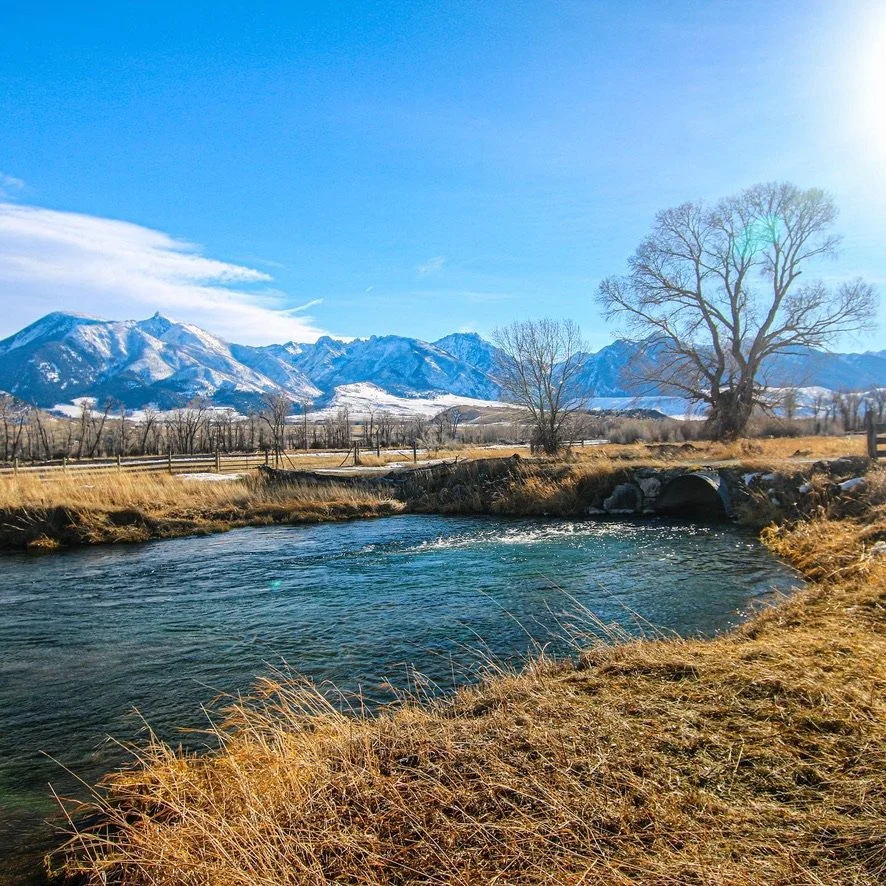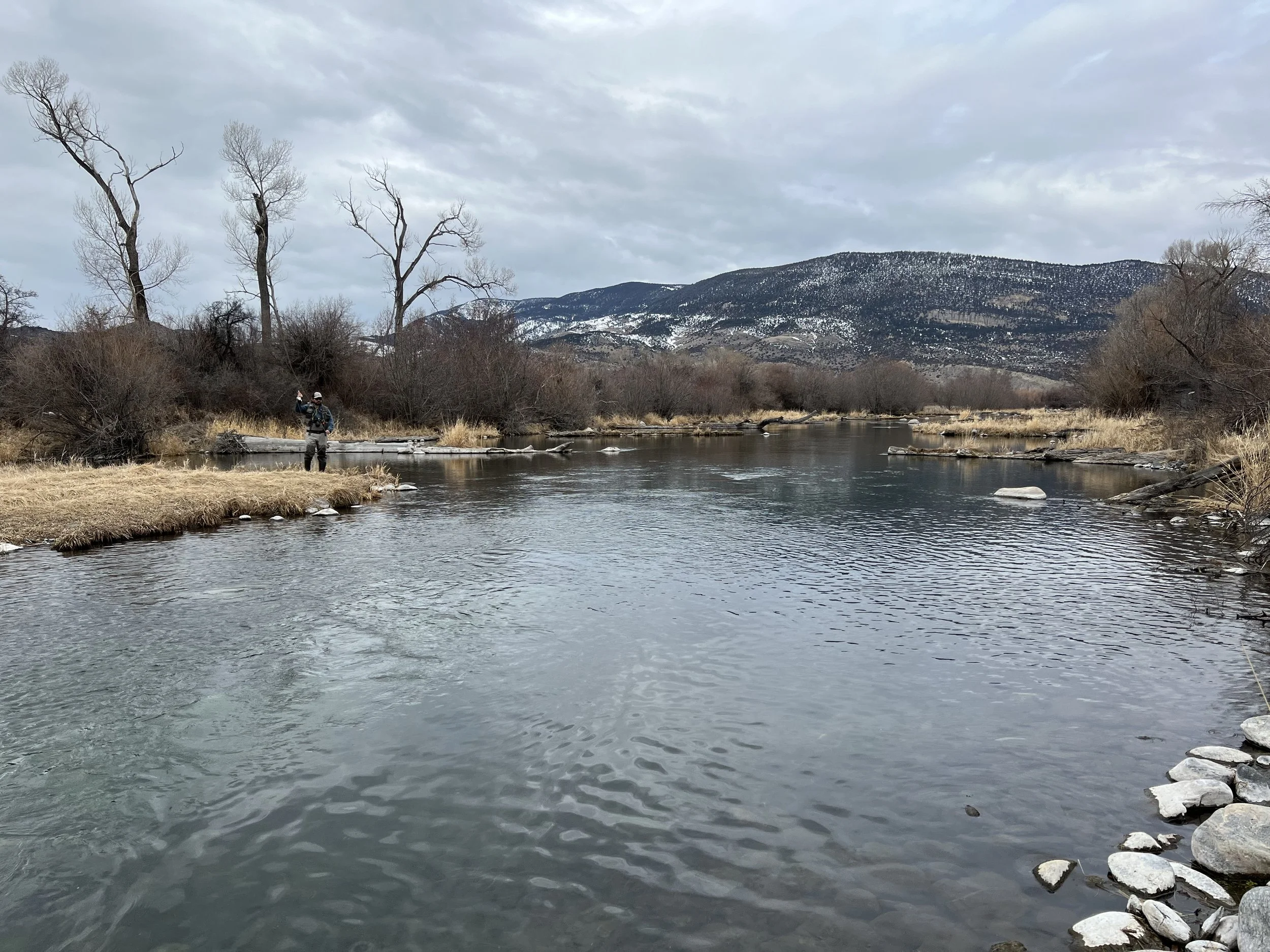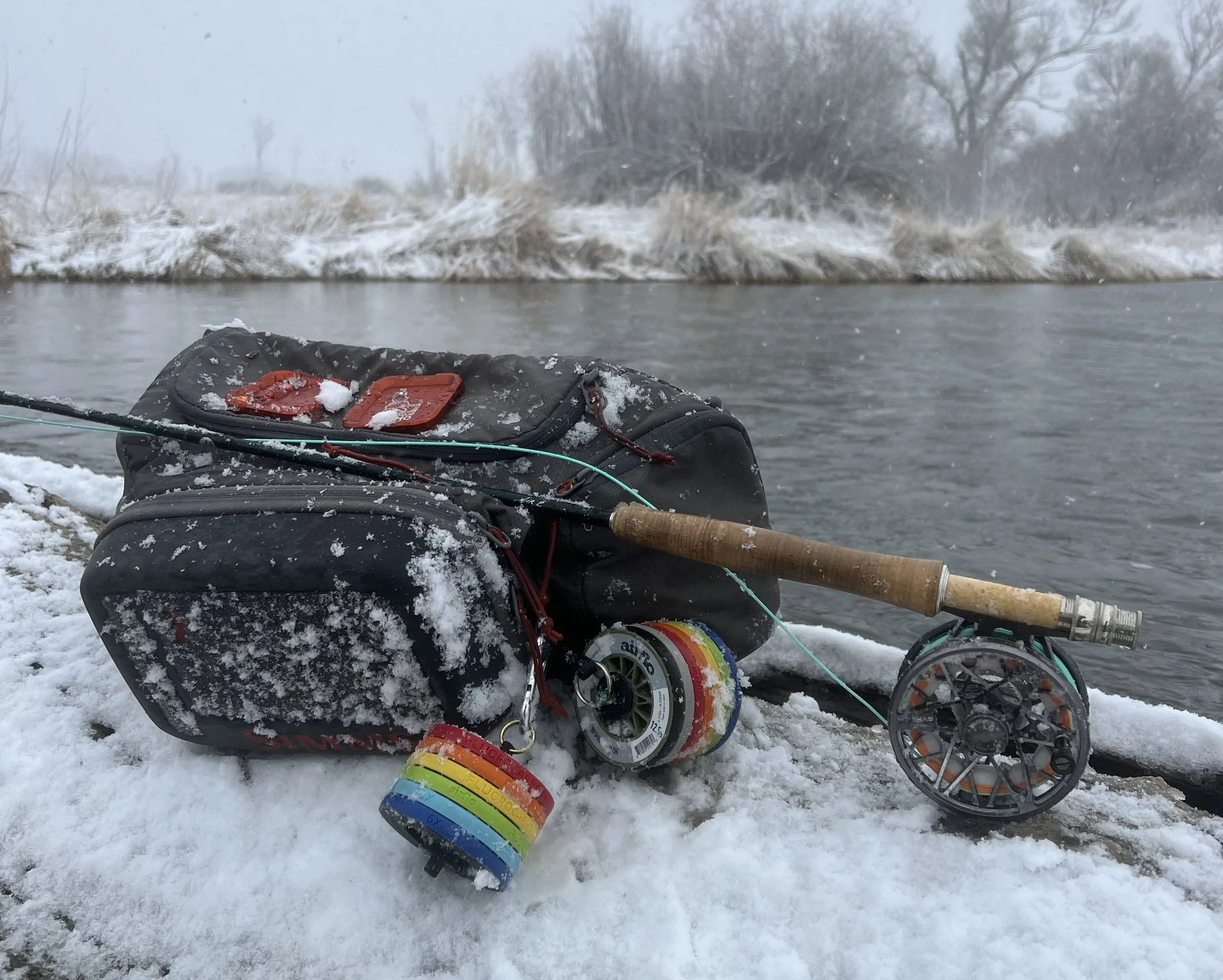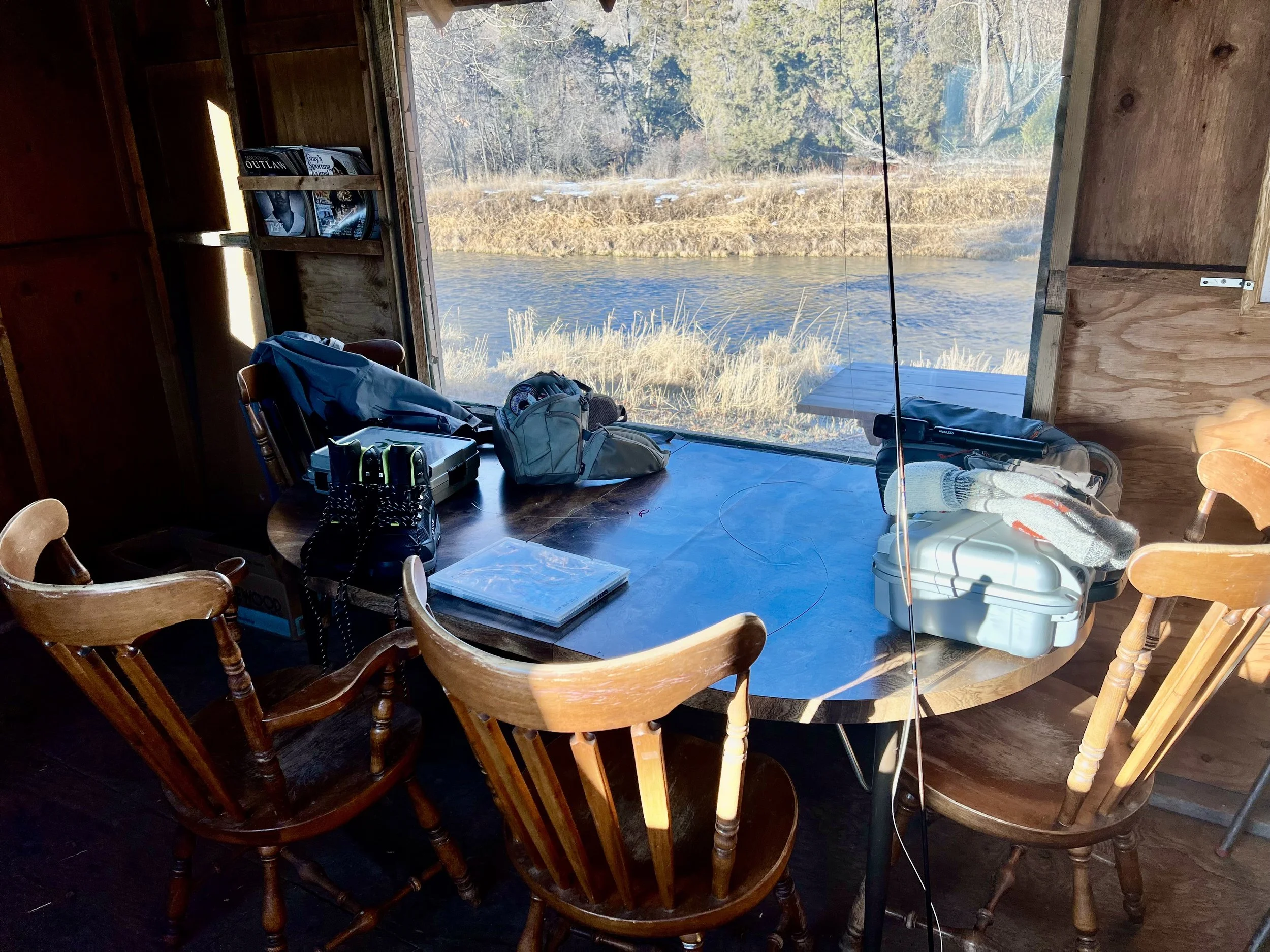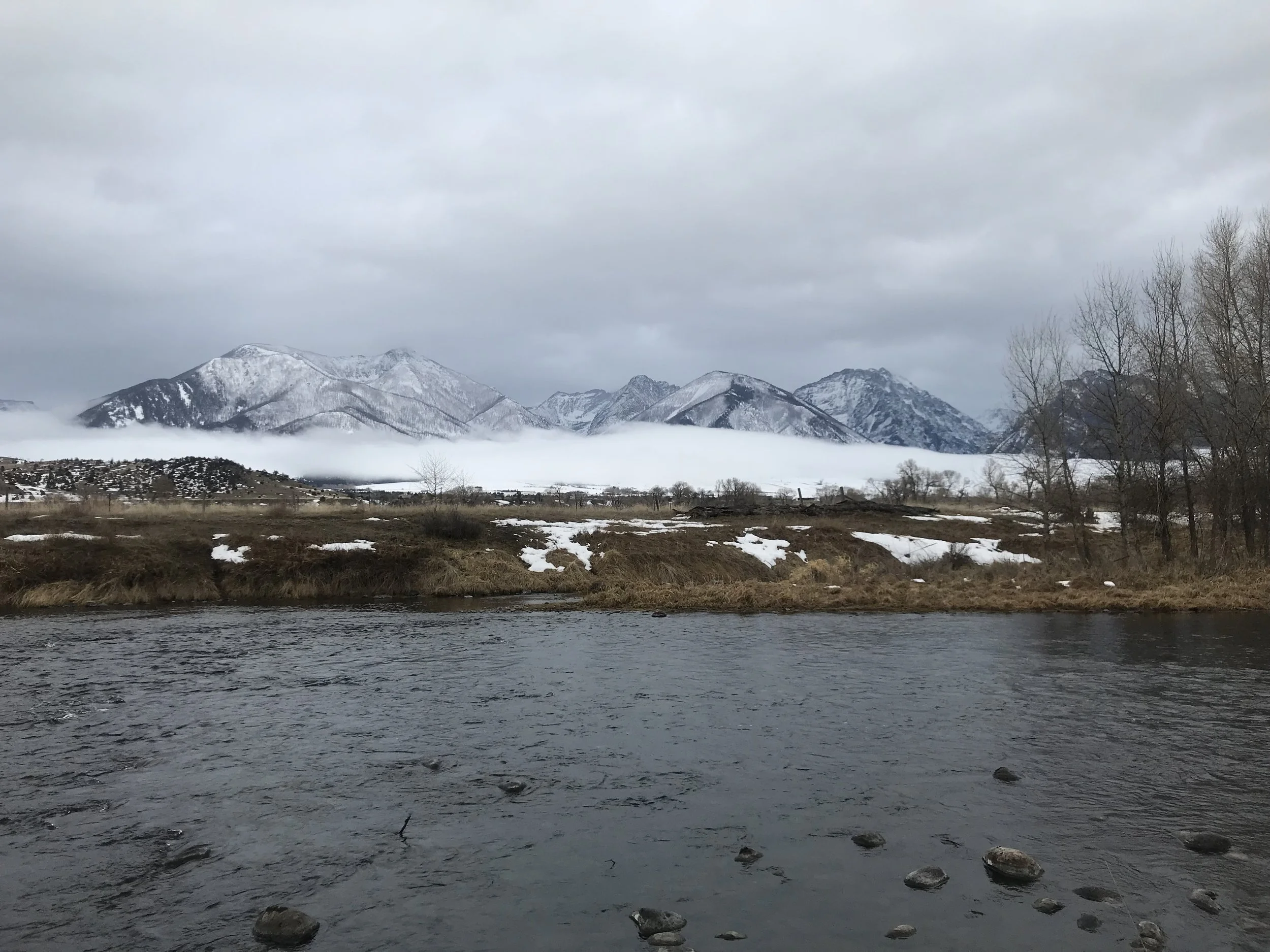Winter Fly Fishing Montana’s Spring Creeks
Winter Fly Fishing Montana’s Spring Creeks: Your Most Reliable Cold-Weather Option Near Bozeman
When winter locks down much of Southwest Montana, our local spring creeks become some of the most dependable, productive, and enjoyable places to fly fish. While freestones like the Gallatin and Yellowstone can freeze over and the Madison can get slushy, creeks such as DePuy’s, Armstrong’s, and Nelson’s stay open, clear, and consistently fishable—no matter how cold it gets.
With steady temperatures, rich bug life, and trout that feed all winter long, Montana’s spring creeks are the closest thing to “cheating winter” that fly fishing has to offer.
Why Spring Creeks Shine in Winter
Winter is where spring creeks truly stand apart. Their spring-fed systems keep water temperatures stable—usually in the high 30s to low 40s—which is warm enough to keep trout active, insects hatching, and daily feeding windows reliable.
The Big Winter Advantages:
Consistent open water even in extreme cold
Stable water temps that keep trout feeding
Clear water that makes sight-fishing possible
Daily midge and Baetis hatches throughout most of the winter
While other rivers ice up, spring creeks feel like a quiet, private winter playground.
Winter Bugs: What Hatches & When
Winter on spring creeks is a small-fly game. Most feeding revolves around tiny insects, but the consistency is impressive. Even on sub-freezing days, it’s common to see rising fish or trout actively feeding subsurface in soft riffles and slow, glassy flats.
Expect These Winter Hatches:
Midges: Daily, typically late morning through early afternoon
Baetis (Blue-Winged Olives): On cloudy or warm afternoons
Scuds & Sowbugs: A year-round staple in spring creeks
Many days you’ll find trout rising gently to midges in slack water and sipping emergers in slow currents—one of the coolest winter experiences in Montana.
Winter Fly Recommendations for Spring Creeks
These trout are selective, and winter clarity exposes everything. Here’s what consistently gets eats:
Midge Nymphs: Zebra Midge, WD-40, RS2 Emerger, Disco Midge, Brassie
Baetis Nymphs: Split Back BWO, Micro May, JuJu Baetis, Perdigon BWO’s
Winter Dries: Griffith’s Gnat, Midge Cluster, Ext Body BWO, Sprout Midge, Sprout BWO
Sow Bugs and Scuds: Czech Style Scuds, Soft hackle Sow Bugs, Ray Charles, CDC Sowbugs
How Trout Hold in Winter on Spring Creeks
While freestone trout often stack in deep, slow winter pools, spring creek trout spread out more because temps are stable and food remains abundant.
Look for fish in:
Soft, walking-speed seams
Slow riffles with consistent depth
Tailouts with smooth transitions
Shallow flats during mid-day sun
Underwater depressions and channel edges
Sight-fishing is common—even in January.
Winter Tactics That Make the Difference
Success on winter spring creeks is all about subtlety, precision, and slowing down.
1. Long Leaders + Light Tippet
10–12 ft leaders ending in 5X–6.5X fluorocarbon are standard.
Winter water clarity demands it.
2. Small Flies, Sparse Patterns
Most winter patterns range from size 18–22. Sparse, clean, natural—the less material, the better.
3. Presentation > Pattern
A perfect drift will out-fish the perfect fly every single time.
Move slowly, minimize false casts, and avoid heavy mending.
4. Fish Micro Indicators
Using Smaller indicators to see the slightest takes. Micro Oros indicators, Pinch-On Indicators and small yarn indicators will help you stay stealth and see the lightest eats.
Pro Tip: tight-line nymphing is deadly in winter.
Sensitive contact = no missed takes.
5. Fish the Warmest Part of the Day
10 AM – 3 PM is prime time.
That’s when water temps bump, bugs start moving, and trout feed hardest.
Best Gear Needed for Winter Spring Creek Fishing
Fishing spring creeks in winter is far more comfortable than wading icy freestones, but having the correct gear makes all the difference.
Rods & Terminal Gear
3–5 wt rods for soft, accurate presentations
9 ft tapered leaders 4X-6X
Fluorocarbon tippet (5X–6.5X)
Micro Indicators - Mini Oros, Yarn or Pinch On Indicators
Split shot in micro sizes
Clothing & Wading Gear
Warm base layers under breathable waders
A solid winter jacket or insulated midlayer
Hand warmers + light rigging gloves
Polarized glasses for sight-fishing clarity
Warming Huts: A Winter Lifesaver
One of the biggest advantages of winter fishing on Montana’s spring creeks is the warming huts. Nearly all of the Paradise Valley spring creeks offer heated cabins where anglers can:
Warm up between runs
Take a break during cold snaps
Enjoy lunch out of the wind
Dry off gloves or add layers
Reset and refocus before hitting the water again
These huts make full-day winter trips not only comfortable but extremely enjoyable—something you simply don’t get on most winter rivers.
Final Thoughts: Winter Spring Creek Fishing Near Bozeman
Montana’s spring creeks are a winter angler’s dream. When other rivers freeze or become unsafe, spring creeks stay open, consistent, and full of actively feeding trout. Add in warming huts, lower winter rod fees, clear water, daily hatches, and technical sight-fishing—and you’ve got the most reliable winter fly fishing option near Bozeman.
Ready to Fish the Creeks This Winter?
If you want dependable winter fishing with world-class scenery and low pressure, winter spring creek trips are hard to beat.
Book a Winter Spring Creek Trip with Rising Trout Fly Fishing Outfitters
Check Our Current Fishing Reports for updated winter conditions

